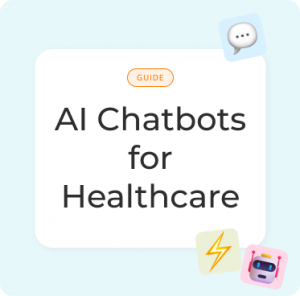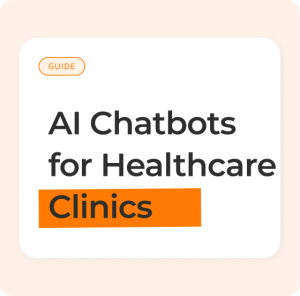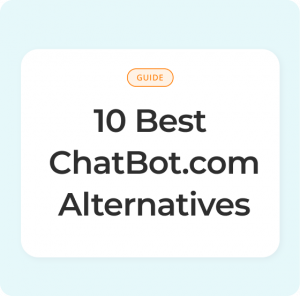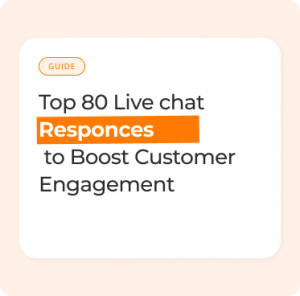Importance of Medical AI Chatbots
The Importance of Medical AI Chatbots in Healthcare
Healthcare teams are under pressure, patients want answers faster, and budgets rarely keep up. Medical AI chatbots help close this gap by supporting patients in real time, standardizing information, and giving clinical staff more time for care that requires human judgment.
This article is a practical, vendor neutral explainer for administrators, digital health leaders, and clinicians. It covers what medical AI chatbots are, why they matter, use cases across care settings, known risks, and a straightforward roadmap for adoption.
Contents
- Why Medical AI Chatbots Matter Now
- What Is a Medical AI Chatbot
- Core Benefits for Patients and Providers
- Real World Use Cases Across the Patient Journey
- Privacy, Safety, and Governance
- Adoption Roadmap, From Pilot to Scale
- What Comes Next, The Near Future of AI in Care
- FAQ
- Recommended Reading and Internal Links
Why Medical AI Chatbots Matter Now
Care organizations face a simple reality. More patients are seeking information online, phone lines are crowded, and clinical teams are stretched thin. At the same time, the standard of service is rising, patients expect on demand responses, clear instructions, and the ability to self serve when possible.
Medical AI chatbots fill this access gap. They provide timely answers for routine questions, help patients navigate portals and scheduling, and surface education that improves adherence. When a question is complex, the conversation can hand off to a human team member with full context preserved.
The goal is not to replace clinicians. The goal is to automate routine communication, support informed decision making, and escalate safely to people when needed.

What Is a Medical AI Chatbot
A medical AI chatbot is a software assistant that communicates with patients through a website widget, SMS, or messaging apps. It uses natural language processing to understand questions and generates safe, consistent responses based on approved content. Modern systems can call external services to check appointment availability, deliver preparation instructions, or send reminders after visits.
Common capabilities
- Answer routine questions, clinic hours, location, parking, preparation steps
- Guide portal access, password help, and contact options
- Collect structured intake, symptoms, and preferences, with proper disclaimers
- Provide education that matches a patient’s stage of care
- Coordinate handoff to staff for questions that need human judgment
- Operate in multiple languages to reduce communication barriers
Good systems are transparent about their limitations, clarify that they are not a doctor, and route emergencies to the correct services immediately.
Core Benefits for Patients and Providers
1. Access and convenience
Patients can ask questions at any hour. This reduces anxiety before procedures, improves preparation, and cuts down on last minute cancellations. Simple answers should not require a phone call or a wait in a queue.
2. Consistency and clarity
Standardized answers improve quality. Instead of varying explanations over the phone, patients receive the same, approved guidance every time, which supports safety and compliance.
3. Relief for busy teams
Front desk and nursing teams spend significant time on repeating the same information. Offloading routine interactions frees staff to focus on tasks that require clinical skill.
4. Data that improves operations
Aggregated conversation themes show what patients ask, when they ask, and where information is unclear. Leaders can fix upstream issues, update content, and measure the impact of changes.
5. Multilingual support
Language access is a determinant of health. Chatbots that converse in multiple languages help patients understand instructions and complete necessary steps with confidence.
6. Lower cost per interaction
Handling routine questions through automation is less expensive than staffing every touchpoint, which supports sustainable access for larger populations.
Where benefits show up in metrics
- Call deflection, fewer repetitive calls to the front desk
- Shorter time to first response, especially after hours and weekends
- Improved attendance, fewer no shows when reminders are clear
- Higher patient satisfaction scores for information and access
Real World Use Cases Across the Patient Journey
The value of medical AI chatbots becomes clearer when mapped to concrete steps in the care journey. The following examples illustrate where automation helps without replacing clinicians.
Pre visit preparation
- Explain fasting rules, medication holds, arrival times
- Share parking information and required documents
- Send day before reminders to reduce cancellations
Scheduling and logistics
- Screen for eligibility, capture preferences, propose times
- Help patients reschedule without calling the clinic
- Coordinate follow ups with minimal back and forth
Triage and escalation
- Identify red flag symptoms and advise emergency services
- Route non urgent issues to staff with conversation history
- Provide clear disclaimers and boundaries for safety
Post visit support
- Reinforce discharge instructions in plain language
- Collect early feedback and address common issues
- Remind patients to complete labs or imaging
Chronic condition education
- Deliver daily or weekly tips that match the care plan
- Encourage adherence, activity, and medication schedules
- Surface local resources, nutrition, and mental health support
Language access
- Provide instructions in the patient’s preferred language
- Reduce misunderstandings that lead to missed steps
- Offer culturally relevant examples and resources
Automation works best when it handles the predictable, then hands off to humans for nuance. The combination is what improves both speed and quality.
Privacy, Safety, and Governance
Healthcare data is sensitive. Any AI deployment must begin with privacy and safety requirements. Leaders should decide what the system can access, what it can store, and which questions must be escalated.
Practical guardrails
- Clear disclaimers, the chatbot is not a doctor and does not diagnose
- Role based access to data, least privilege for every integration
- Audit logs for content updates and model behavior changes
- Safety filters for high risk topics and emergency guidance
- Human in the loop for any decision that affects care pathways
Legal and compliance teams should review prompts, content sources, and escalation logic. The aim is to keep the system useful while protecting patients and staff.
Adoption Roadmap, From Pilot to Scale
Successful programs start small, measure, then expand. The steps below help teams build momentum and avoid surprises.
- Define the first use case, choose a single service line or topic with high volume questions, for example preparation instructions for imaging or rehab scheduling.
- Assemble approved content, gather the exact instructions staff already share, write them in plain language, and include translations where needed.
- Set safety and escalation rules, define when the bot must stop and hand off to a person. Make this visible to patients.
- Pilot with a small audience, staff a channel for quick feedback. Track the proportion of questions solved and the time saved.
- Integrate gradually, start with read only data, then add calendar or reminder actions after validation.
- Measure and iterate, use conversation analytics to improve content, remove friction, and update FAQs based on real questions.
- Scale to new journeys, add post discharge support, chronic care education, and language coverage in phases.
Related resources on Oscar Chat
For practical examples and implementation patterns, explore these pages.
What Comes Next, The Near Future of AI in Care
Generative models are improving, which means chatbots can summarize information, extract steps, and adapt tone to the patient’s context. The next wave will connect more hospital systems, which allows reminders and education to reflect each patient’s plan. Human oversight remains essential, the best systems make it easier for clinicians to review and correct as needed.
Expect smarter routing, better multilingual support, and proactive outreach that anticipates needs. The aim is a patient experience that feels coordinated, with fewer gaps between visits and fewer surprises on procedure day.
FAQ
Q: Are medical AI chatbots safe for patients
A: Safety depends on design. Good programs use approved content, clear disclaimers, and hard rules for escalation. Emergencies are routed to the correct services immediately, and sensitive questions move to human staff.
Q: Do chatbots replace clinical staff
A: No. They handle routine communication so staff can focus on clinical work. The combination increases access without lowering standards.
Q: How long does a pilot take
A: Many teams validate a narrow use case in weeks, then add integrations and languages in phases. Timelines vary with content readiness and IT review.
Q: What about language barriers
A: Modern systems support multiple languages and can present the same approved guidance consistently, which helps patients follow instructions accurately.
Q: What metrics should we track
A: Start with call deflection, time to first response, completion of preparation steps, no show rate, and patient satisfaction for access and information.






